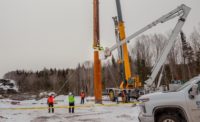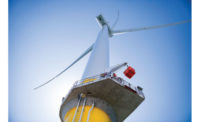New England Partners Push Big Solar Brownfields Project
Ten capped landfills will be reused as solar fields under an agreement between Cape & Vineyard Electric Cooperative, located in Cape Cod and Martha's Vineyard, and American Capital Energy, North Chelmsford, Mass.
The 18.3-MW project on Cape Cod and Martha's Vineyard, the largest of its type in New England, is expected to produce 22,500 MWh per year, enough energy to power 3,132 Cape and Vineyard homes, according to the cooperative. Energy produced from the project will provide about 1.1% of electric power for cooperative customers.
A construction date for the $83-million project has not yet been scheduled.
The federal government estimates there are 425,000 industrial or contaminated sites covering about five million acres. The EPA has started the “RE-Powering America's Land” initiative to encourage the development of such land for solar, wind or biomass energy development. These sites work well because they often have critical infrastructure, such as transmission lines, roads and water, and they are properly zoned for such development. Further, they often offer thousands of acres of land with few site owners.
The Cape and Vineyard solar project was awarded to American Capital on April 21. Unlike the controversial 130-turbine offshore Cape Wind farm planned near Cape Cod, this project, which is expected to be New England's largest solar installation on a brownfield site, has won unanimous local support.
Bart Krishnamoorthy, research associate at the Solar Electric Power Association, says the project could displace the Pittsfield, Mass.-based 1.8-MW Silver Lake Solar Project—owned by Western Mass. Electric Co., a subsidiary of Northeast Utilities and installed by American Capital—as the largest solar-on-brownfields project in New England.
The Dept. of Energy and the Bureau of Land Management are also supportive of developing solar on brownfields, Krishnamoorthy says. “With all this land available, both the DOE and BLM want to put it into use and streamline the permitting process,” he adds.






